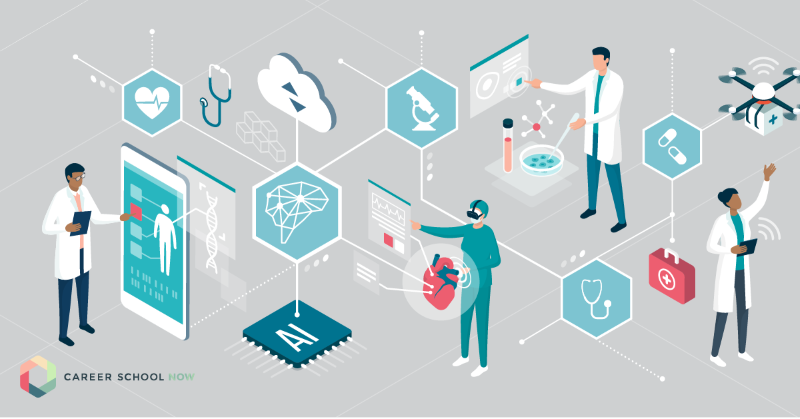Best Practices in Medical Administration for Improving Efficiency and Minimizing Expenses
In the ever-evolving landscape of healthcare, the pursuit of finest techniques in medical management is paramount for boosting efficiency and curbing costs. By incorporating sophisticated innovations such as digital wellness documents and telemedicine, health care service providers can simplify operations and improve individual treatment. Technology alone is not a panacea; maximizing resource allocation and fostering joint interaction amongst treatment teams are equally vital. As companies strive to balance high quality and cost, what methods should be focused on to attain these twin goals? The solution to these inquiries hold the key to a more lasting medical care system.
Leveraging Advanced Innovation
The integration of electronic options into healthcare systems has actually transformed the way centers run, improving processes and boosting individual care. By systematizing individual info, EHRs eliminate the demand for troublesome paperwork and promote seamless communication amongst health care service providers.
Telemedicine is another technical advancement that has actually transformed client interaction. It supplies convenience for both clients and health care professionals by making it possible for remote examinations, which can decrease the need for in-person visits and maximize visit scheduling. In addition, telehealth systems can expand healthcare accessibility to country or underserved areas, linking spaces in treatment distribution.
Additionally, the usage of Artificial Intelligence (AI) and machine learning is coming to be significantly common in anticipating analytics, allowing for very early discovery of potential health problems and even more educated decision-making. These modern technologies, when integrated properly, can boost analysis precision and personalize individual therapy plans, eventually causing boosted healthcare results and functional performance.
Optimizing Resource Allotment
By tactically handling sources such as employees, tools, and funds, healthcare facilities can considerably improve their functional efficiency, enhance person end results, and lower unneeded expenses. The initial step in enhancing resource allotment includes carrying out an extensive evaluation of present possessions and identifying areas where sources might be underutilized or exhausted.
Focusing on resource appropriation based on person requirements and solution needs is important. This entails straightening sources with high-demand locations, such as emergency situation care or specialized treatments, to ensure timely and reliable person treatment. Carrying out adaptable staffing designs can also maximize labor resources by changing personnel allowance in feedback to changing patient quantities. Furthermore, embracing telemedicine and various other technical services can alleviate physical source restraints by providing different avenues for patient-provider communications.
Financial resources need to be meticulously kept an eye on and alloted with strategic foresight to sustain both temporary functional needs and long-lasting institutional goals. This consists of investing in training programs that boost team competencies and adopting energy-efficient methods that minimize functional costs (medical administration). Eventually, an optimized source appropriation technique cultivates a sustainable healthcare atmosphere that is receptive, effective, and financially prudent
Streamlining Process Procedures
When medical care centers objective to enhance functional performance, enhancing workflow processes ends up being a pivotal focus. Effective workflows lessen redundancy, remove unneeded steps, and improve coordination among medical care specialists. This approach not only increases solution shipment but additionally improves the top quality of patient care.

Next, modern technology assimilation plays a significant function in simplifying process. Implementing digital health documents (EHRs) and electronic medical professional order entrance (CPOE) systems reduces documentation, reduces human error, and guarantees info comes to all relevant personnel. Furthermore, leveraging telemedicine systems can streamline client appointments and follow-ups, decreasing the stress on physical facilities.

Eventually, structured workflows cause set you back decreases and boosted patient complete satisfaction, promoting a much more lasting medical care setting.
Enhancing Data Administration
Structure upon streamlined operations, maximizing information monitoring becomes an essential part beforehand healthcare administration. Effective data administration systems are essential for preserving exact patient documents, boosting decision-making, and guaranteeing compliance with regulative requirements. By implementing durable information administration options, health care centers can improve the quality of patient treatment while at the same time decreasing operational costs.
One key aspect of enhancing data administration is the combination of sophisticated digital health record (EHR) systems. These systems promote the smooth exchange of patient details throughout different divisions, reducing replication of examinations and reducing errors. A properly designed EHR system sustains information analytics, enabling healthcare companies to identify patterns and make informed choices relating to patient treatment.
In addition, protecting client information is paramount. Taking on detailed cybersecurity measures, including security and normal audits, ensures the honesty and confidentiality of delicate info. This not only secures clients yet likewise preserves the organization's reputation.
Spending in personnel training is another essential aspect. Enlightening health care specialists on data monitoring methods improves their capacity to effectively utilize innovation, bring about boosted patient outcomes. To conclude, improving data administration with innovative modern find more information technology and thorough other training is important for attaining performance and price decrease in clinical management.
Fostering Collaborative Interaction
A crucial component in advancing medical management is cultivating joint interaction amongst medical care professionals. Reliable interaction is extremely important for ensuring seamless individual care, enhancing treatment outcomes, and reducing errors. By encouraging open dialogue and coordination across multidisciplinary groups, medical care companies can improve their operational efficiency and decrease unnecessary prices.
Central to this approach is the integration of interaction technologies such as electronic health documents (EHRs) and secure messaging platforms, which help with the rapid exchange of important individual info. These tools enable doctor to gain access to and share data in actual time, guaranteeing that all team members are notified and lined up in their decision-making processes. Additionally, normal group meetings and interdisciplinary rounds can further advertise a culture of cooperation and liability.
Training programs concentrated on improving communication abilities are additionally necessary. These programs can help staff create the capability to communicate information plainly and listen proactively, thus decreasing misconceptions and fostering a supportive job atmosphere. Furthermore, taking on standardized communication procedures, such as SBAR (Scenario, History, Assessment, Suggestion), can streamline the exchange of information, ensuring that essential details are communicated succinctly and effectively. Ultimately, cultivating joint interaction brings about enhanced medical care shipment and cost savings (medical administration).

Conclusion
Incorporating advanced technology, such as electronic health records and telemedicine, alongside optimized source appropriation and structured operations procedures, is crucial for improving effectiveness in medical administration. Effective information monitoring and cultivating joint communication among healthcare groups are critical for decreasing redundancies and boosting treatment top quality. By focusing on precautionary care and participating in quality improvement campaigns, medical care organizations can achieve significant cost savings and boosted person results, thus guaranteeing lasting medical care shipment try this in an increasingly complex setting.
Comments on “Recognizing the Key Functions and Duties in Medical Administration”